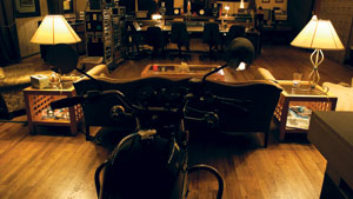
Leasing business equipment and technology has become a standard wayof life for a majority of American companies. An estimated 80% of allU.S. businesses lease some or all of their equipment; of the $563.1billion spent by U.S. businesses on productive assets in 1996, $168.9billion-30%-was leased.
The leasing of professional audio equipment gained popularity abouta decade ago, as the upper end of the equipment market continued toclimb in sophistication and price. The day of the million-dollar audioconsole was imminent.
Banks have been primary lenders to the studio industry for years,but as the stakes grew and the equipment and operations of the industrybecame more opaque to nonprofessionals, many banks became skittish atproviding large loans to studios. A recession in the early 1990s didn’thelp, and a surge in the number of start-ups shortly thereafter-in parta by-product of affordable technology that saw many home studios movinginto the commercial stage-presented lenders with potential customerswith short credit and business histories.
Several leasing companies specializing in pro audio entered thescene during this period. The largest is Terminal Marketing, in the NewYork City suburb of New City, Westchester County. But in recent yearsthe number of leasing companies has grown across the country. Banksremain a big player in the credit aspects of this business, but leasingspecialists have been significant in helping many studios getstarted.
TYPES OF LEASES Most studios can’t afford to make large capitalpurchases, such as consoles and digital recording systems, outrightwithout adversely affecting cash flow. With a straight bank loan, thebuyer owns the equipment (the lessor retains title to the equipmentuntil the term of lease has run its course, usually between three toseven years), contingent, of course, on continuing to pay off the loan.And with low interest rates available, bank loans look attractive.However, many banks are reluctant to make loans on expensivetechnology; in the event of default, the bank simply becomes one morecreditor, and even if certain items are pledged as collateral, banksare not in the studio business and are generally not happy about havingto hold auctions to recover their money. Leasing, then, becomes analternative.
There are basically two types of leases: the so-called “true” lease,in which there is a market-value buyout at the end; and thedollar-option lease, in which the entire cost of the equipment isamortized over the term of the lease, save for a token sum that variesaccording to state and local regulations. Most often it’s $1; somestates, such as California, require $101. The difference is critical tothe IRS, and thus to lessees.
“Intent to own” is the rule that the tax people use in determininghow and how much of a lease can be deducted from taxes. A “true” leasehas the residual value of the equipment determined at the end of thelease term. As Chris Marchese, senior account executive at CommercialCredit, a pro audio leasing specialist in Irvine, Calif., explains,”There’s no Kelly Blue Book for pro audio; you have to see what theequipment’s value is at the time the lease expires based on what elseis out there, because technology in this business changes so fast.” Butin a true lease, the entire payment-principal and interest-isdeductible, treated as through it were a rental for tax purposes.
With a dollar-option lease, the fixed, token sum at the end-which iswhat allows it to technically fit the definition of a lease vs. aloan-is also construed as an intent to own by the IRS in mostinstances. The finances are thus treated the same as a loan: Theinterest portion of the payment is fully deductible, and the equipmentis subject to standard depreciation schedules (usually over a period offive years, though not necessarily at an even 20% a year; check withyour accountant).
The dollar-option lease is the one most often used in pro audio, andas explained, it’s really more like a straight loan in the legal guiseof a lease. “I don’t even know why they call it a lease,” observes DougPell, East Coast lease manager with J.G. Capital Corp., a 15-year-oldleasing company in Manhattan Beach, Calif.
Aside from the tax benefits, a lease can be less entangling than astraight loan. The lessor retains ownership of the equipment, and thatserves as its collateral. Default on payments, and they take theequipment back. “As lessors, we’re not putting liens on other equipmentor cross-collateralizing bank accounts or homes,” explains Marchese.”Out interest is in the equipment.”
TYPICAL LEASE Outlining a typical dollar-option lease for ahypothetical $300,000 console, Doug Pell calculates a $6,300.56 monthlypayment on a five-year (60-month) lease. While the interest is arrivedat by using a money factor, reverse calculations indicate a 9.5% annualpercentage rate (APR), which Pell, a former studio owner who leasedequipment from the same company he now works for, says is toward thelower end of what’s available. Make the last payment along with thebuyout payment, and the title is yours.
However, there are some other considerations, says Pell. On a$100,000 lease, for instance, cutting the term from 60 months to 48months reduces the amount of interest payable over the course of thelease from approximately $35,000 to $27,500, without affecting theinterest rate. This trade-off will cost the lessee slightly less thanan additional $200 per month to a 60-month payment of approximately$2,250. “Everyone knows cash flow is king, and they’ve heard the horrorstories of businesses going under because they can’t pay their leases,”says Pell. “But the truth is, if you can afford to squeeze out a littlebit more money each month, you can reduce your overall term costssubstantially. That’s always worth considering in a lease.”
Some key points to note in a lease agreement are the term (length);the interest rate (running around 11 to 12% for purchases under$100,000, less for larger purchases; also expressed as a “lease factor”or “money factor,” a decimal-place inversion of the actual APR); natureof payments (monthly, quarterly, semi-annually); down payments (usuallyfirst and last month’s payments, with a 30-day lag before regularpayments begin); warranty pass-through (almost always, but ask;remember, you don’t own the equipment, the lessor does); and having allof the rights and responsibilities of both the lessor and lesseespelled out clearly in writing (such as how late fees are computed).There is a growing trend toward writing lease agreements and othercontracts in standard English rather than obscure legalese-if youragreement is less than clear on key points, have an attorney look itover.
CREDIT CHECK There is the “damned if you do, damned if you don’t”aspect to the credit check. As Pell explains, “The studio industry is amom-and-pop business. People often play games with theirfinancials-they overstate losses and expenses so as to pay lower taxes.But if they’re not showing profits, that can put them in between a rockand hard place when it comes to a credit review.” This, he adds, is oneof the reasons that argues in favor of using a leasing company thatspecializes in pro audio. “We and others tend to give more weight tosomeone’s payment history than some of the other factors,” he says.
Still, getting approved for a lease is a pretty straightforwardprocess. Expect an application to ask questions about how long thebusiness has been in operation, how it’s structured (corporation,partnership, LLC, etc.), some basic personal information on the companyprincipals (home addresses, phone and social security numbers, own orrent their homes), and references from banks, other lessors, members ofthe industry and vendors. If the studio is a relatively small business,the lessor may pull a personal credit history from a reporting companysuch as TRW, often going back three to five years, as well as checkaverage bank balances over a year. “That’s really just a thumbnailsketch,” says Marchese. “In the process, you’re also trying to get afeel for the person and his or her business. You have to go with gutinstinct some of the time.”
Gut instinct works both ways, and lessors have been hit by scams.Marchese cites South Florida’s Dade County as one hot spot where a lotof pro audio lease fraud has taken place. In the typical scam, as heexplains it, a prospective “client” is in league with an equipmentseller on a relatively modestly priced piece of equipment, say around$30,000. “We can do the deal, but we don’t require an actual inspectionto see if the customer got the equipment,” he says. “We do a verbal,asking the customer if it arrived and was working properly. If it is,then we release the money to the seller.” However, often there’s noequipment, just a bogus invoice. The lessor gets the standard first andlast month’s advance payments, and then nothing else. Buyer and sellerdisappear. Marchese says he’s also aware that certain markets areoversaturated with studios and equipment at given times (such asNashville is now). “That’s not to say we wouldn’t do leases in thosesituations,” he says, “but we’d want to scrutinize the market a bitmore than we might otherwise.”
Customers need to stay alert, too. Not every leasing company hangingout a shingle has your best interests at heart. Lou Gonzales, who hasleased all of his many consoles at Quad Recording in Manhattan(including a pair of SSL 9000J boards and an Axiom MT), recalls thathis early leasing experiences were less than pleasant. “I definitelyhad problems when I first started leasing years ago,” he says. “It wasmostly a matter of not having the end-of-term buyout made clear fromthe start. There can be all sorts of hidden fees and costs. And also,don’t forget that they still own the equipment right up until the end.Even if you’ve made the very last payment, if you forget to exercisethe one-dollar buyout, to send them that last dollar, you couldtechnically lose the equipment. And the really bad companies can’forget’ to remind you that you’re at the end of the lease. But if youhave a good leasing company, it can keep you in business.”
EARLY TERMINATION One of the biggest bones of contention inequipment leasing is early termination. Lessors hate it, and many arereluctant to agree to it in the lease agreement. Some also imposepenalties. In short, the way most lease agreements are worded, thelessee has to pay the full amount owed on the lease, includinginterest, whether the lease runs its full term or not. The lessee cantry to find a buyer for the equipment, which would reduce the principalowed, but the leasing company makes its money from the interest.Marchese says that there is sometimes room to negotiate the cost of anearly termination, but expect to find resistance to that from lendersin most instances.
But once a studio has entered the lease game, it can use earlytermination to its advantage under certain circumstances. Once a leasepasses its halfway point, it can make sense to terminate early (as longas there are no additional penalties specified for doing so) and tradeup to new equipment by using the residual value of the original pieceof equipment as leverage. Let’s use the hypothetical $300,000 consoleagain. In year four of the five-year lease, the lessee still owes$151,200 of the $378,000 (including interest) original loan. If theoriginal console has a residual value of $150,000, that can be appliedto a new $300,000 console, giving the studio a much newer piece oftechnology for nearly half the monthly payments. “Some studios justkeep on rolling leases over after they start,” says Pell. “It allowsthem to stay with the newest technology. Others simply want to own itat the end of the lease term.” The caution here is to choose equipmentwith the highest value-retention over time; that generally means proventechnology. Adroit choices at one point can generate savings later.
SIZE MATTERS Most lease companies won’t deal in numbers less than$10,000. Upper lending limits generally depend upon the financialcredentials of the lessee. However, most lease companies also limit theterm of any lease, regardless of size, when it comes tocomputer-oriented equipment and mass-production items. These includePC-based workstations and modular digital multitracks. J.G. Capitallimits leases on these items to three years, citing low, sometimesnegative, residual values.
Leasing can free up a studio’s capital for other purposes, and allowa studio to move to the next level. It can also provide significant taxrelief under the right circumstances. But in the end, remember that alease is simply another kind of credit; and whenever you borrow money,remember that nothing it buys you is yours until that last dollar goesout the door.





